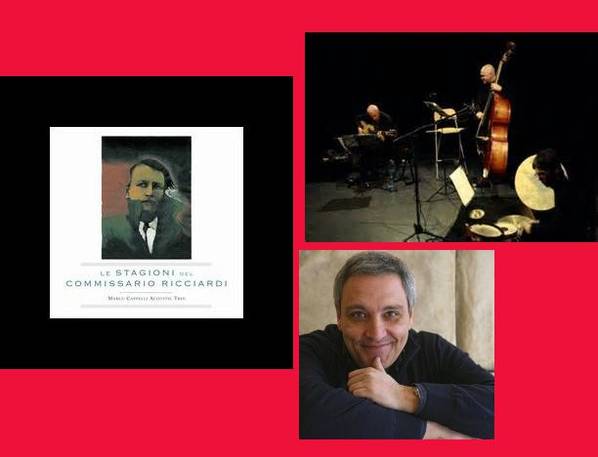A former student of conser- vatories in Rome and Basel, and a vital member of the down- town scene since 2004, guitarist and composer Marco Cappelli isn’t new to mul- timedia produc- tions involving literature. In 2011 he commemorated the 10th anniver- sary of 9/11 in New York with an original performance based on the successful comic book In the Shadow of No Towers by Pulitzer Prize-win- ning cartoonist Art Spiegelman.
Noted actor John Turturro read the texts while a series of ani- mations based on Spiegelman’s drawings were projected on the wall while Cappelli’s group Syntax Error played in the fore- ground (DVD by Mode Records). Then came his first album with Acoustic Trio, which includes bassist Ken Filiano and percus- sionist Satoshi Takeishi, among the most active improvisers in the New York musical avant- garde.
The album, Les Nuages en France (Mode Records), was based on the work of French crime novelist Fred Vargas. And now Le Stagioni del Commissario Ricciardi (The Four Seasons of Detective Ricciardi) combines he experiences and techniques Cappelli has developed over the years in a mature proj- ect launched by Tzadik, the label created and managed by American avant-garde icon John Zorn.
The literary work covered here is by another popular crime writer, Maurizio De Giovanni, whose series about Detective Ricciardi is set in 1930s Naples and has been successfully translated into French, Spanish, German, and English (see our mini-review on the left page).
Cappelli and De Giovanni met in their hometown, Naples,one of the stops on the Trio’s 2011 European tour. The writer was invited to read from his work while the Trio improvised.
De Giovanni subse- quently gave Cappelli a copy of his books.
“I went deep into Maurizio’s stories,” says Cappelli, “and found them to be impressive, for his style as well as their setting...I decided that Detective Ricciardi would be my next inspiration for the Acoustic Trio.”
The record brilliantly synthe- sizes minimalism, jazz, Italian folk music, contemporary clas- sical music, movie soundtracks, and more, resulting in a dramatic and evocative new music. Besides the merits of the three virtuosi, its success owes much to the sound of Cappelli’s bizzarre “extreme” guitar—an amplified classical guitar modi- fied with the addition of eight sympathetic resonating strings and MIDI devices.


